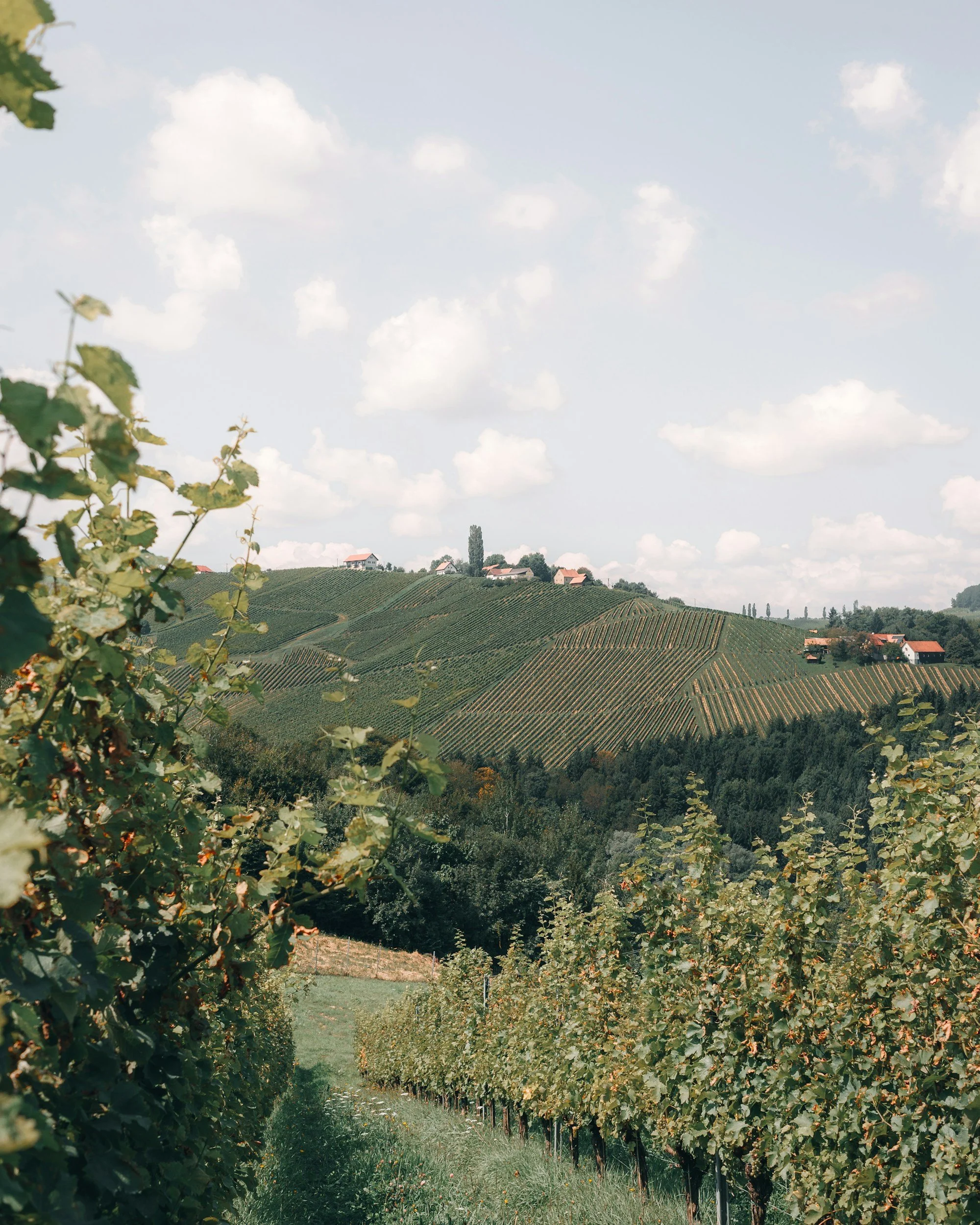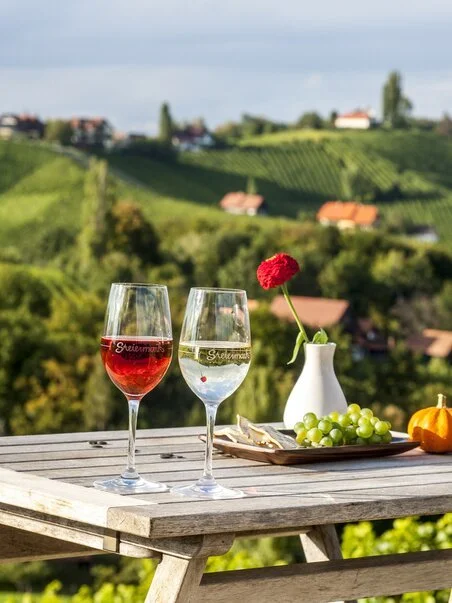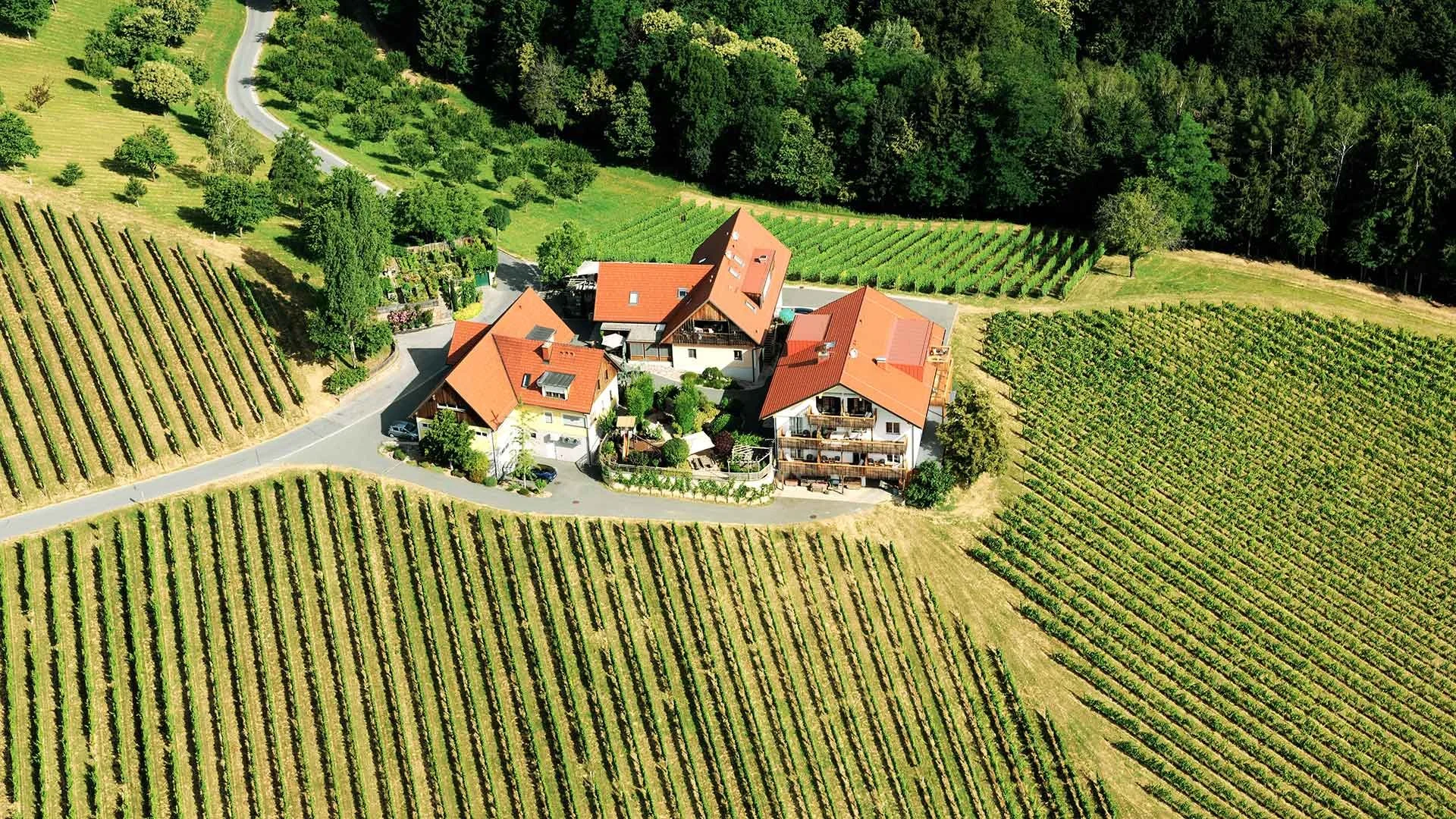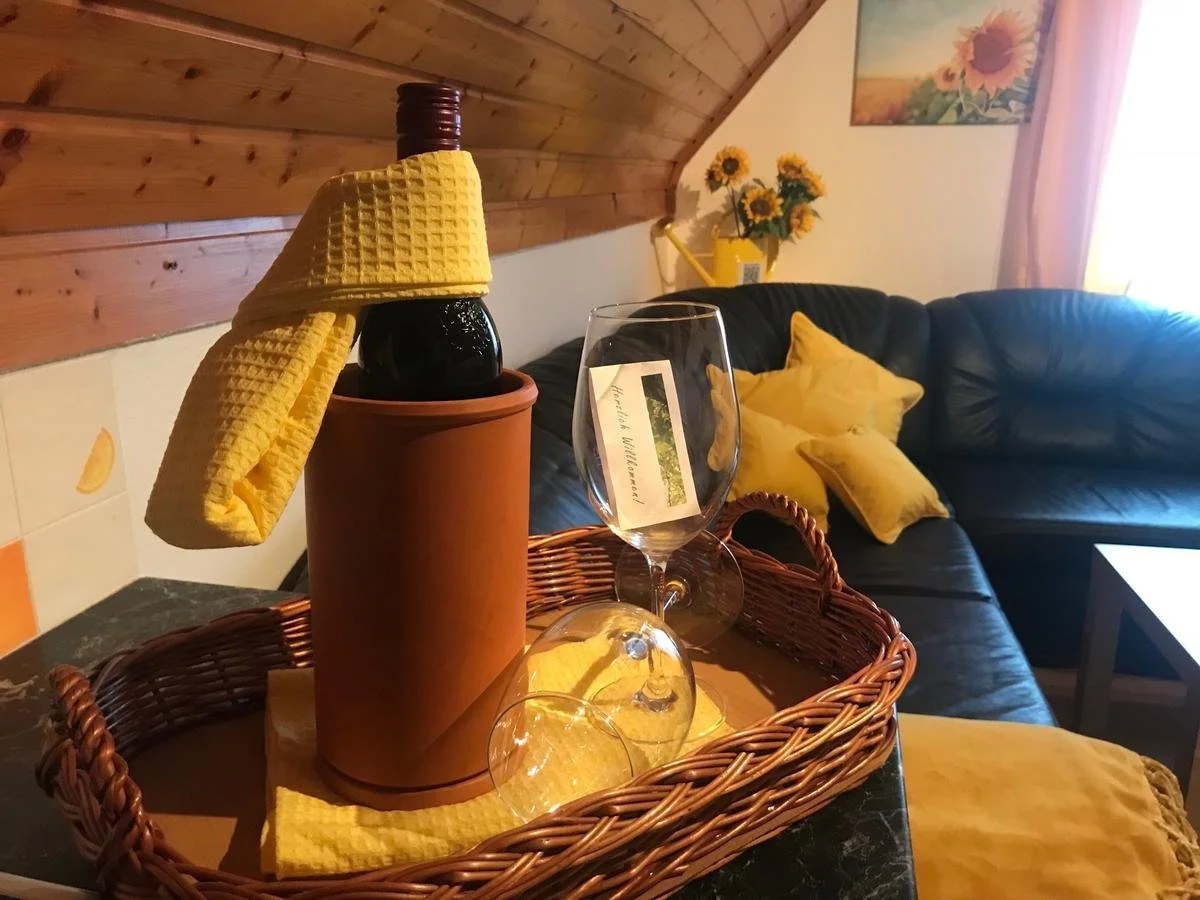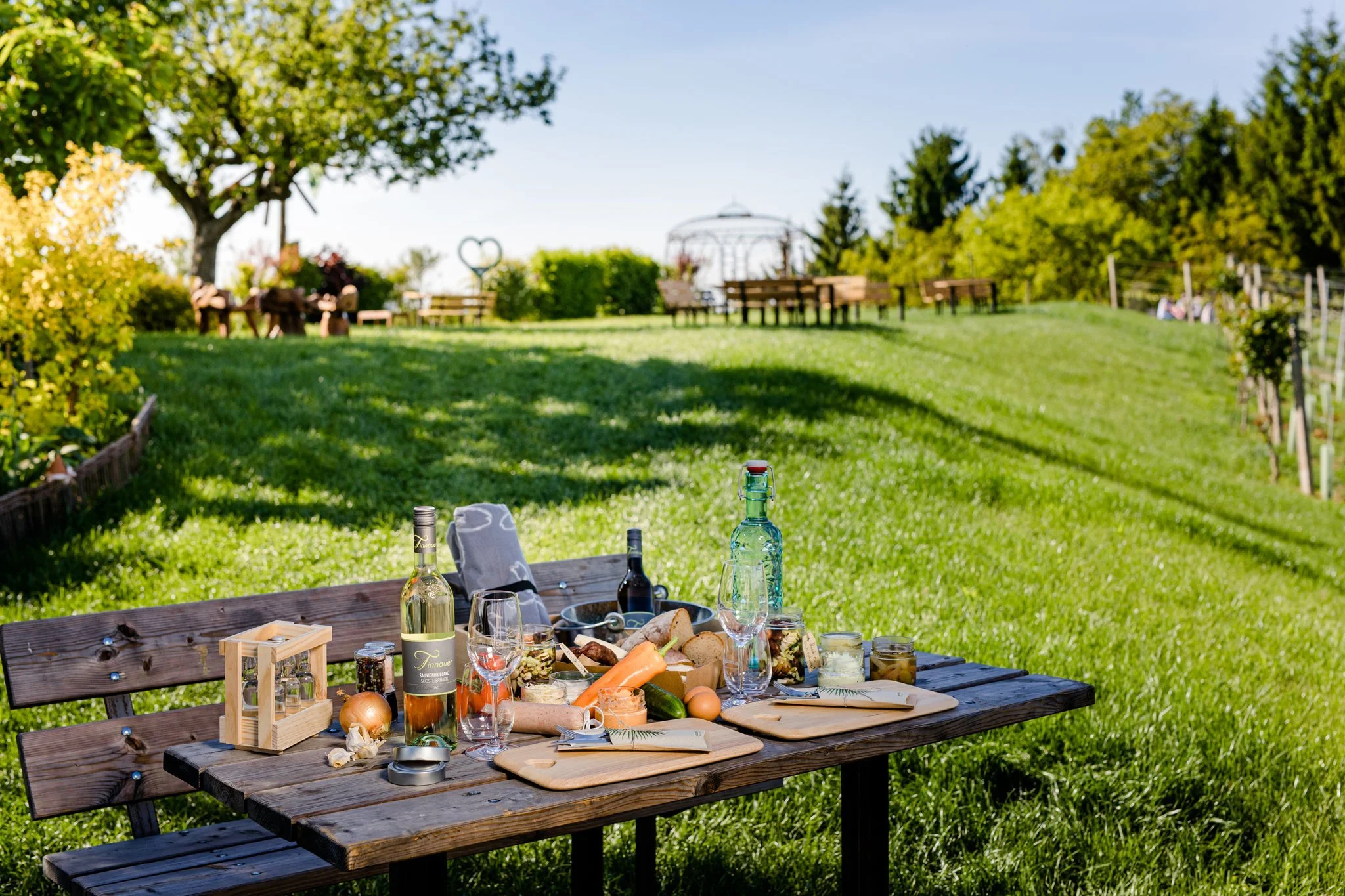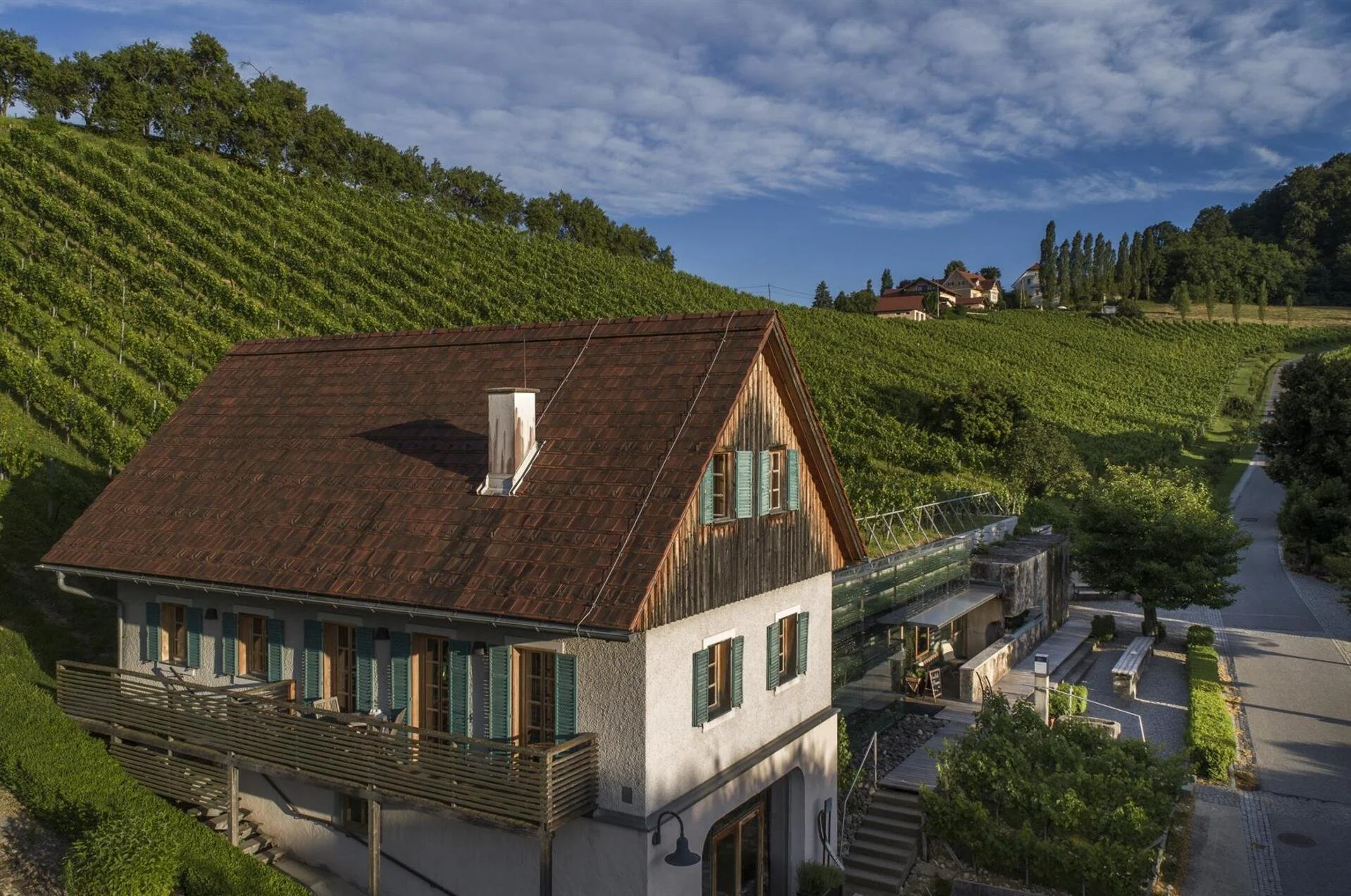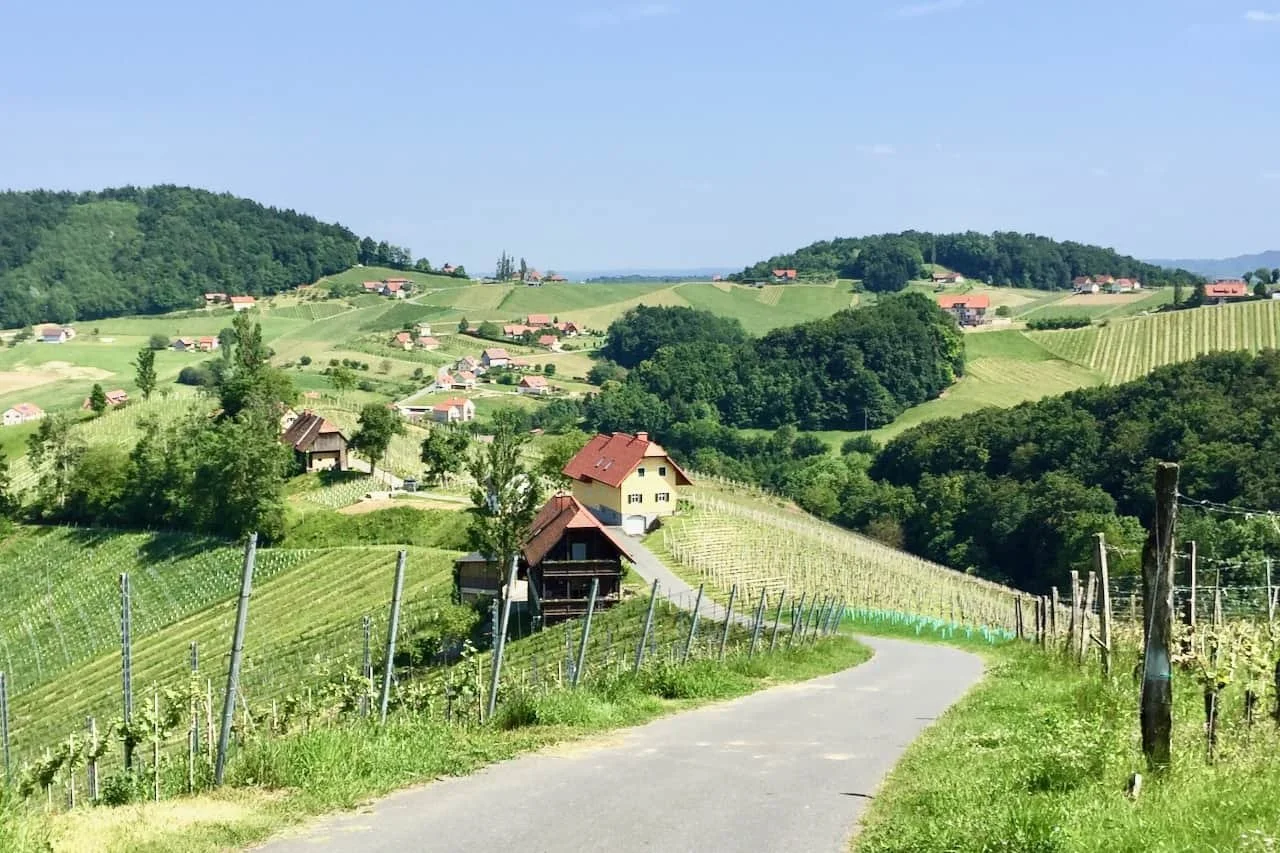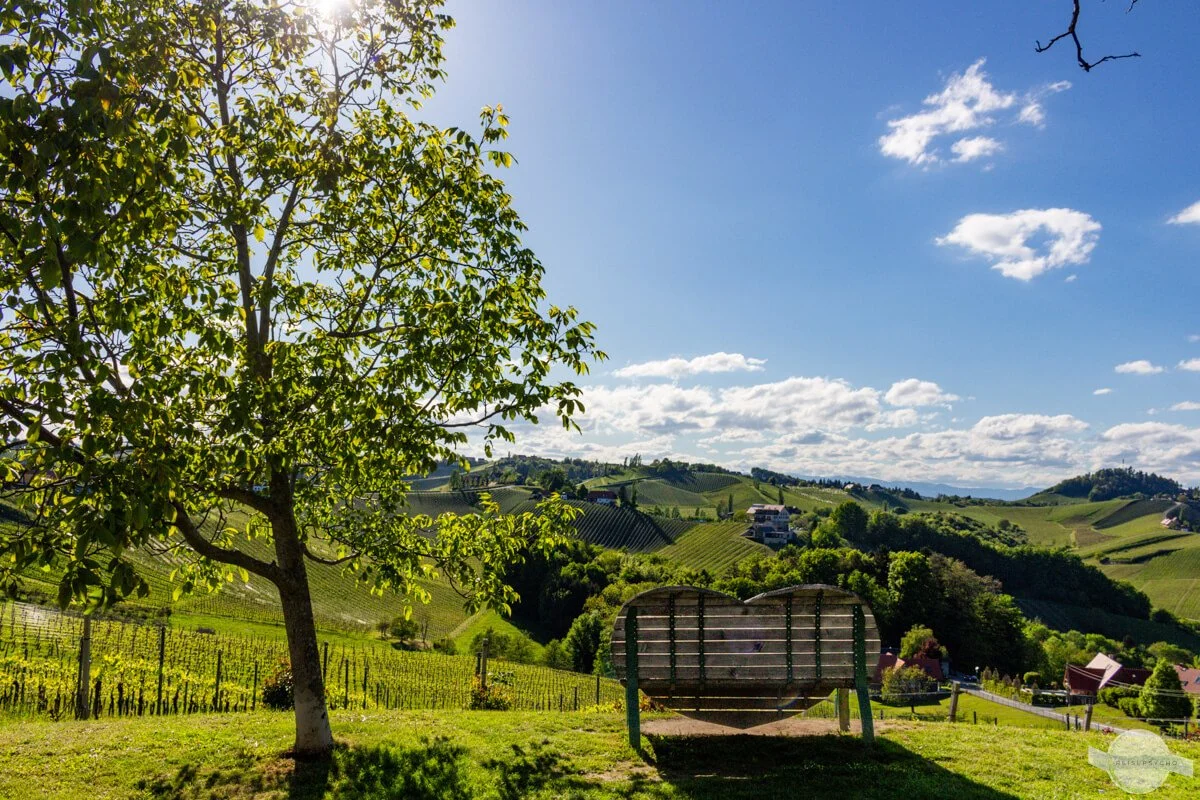Slow Mornings and Cozy Meadow Walks in Südsteiermark, Austria
If you’ve ever craved a place where no one rushes you to order, where your morning coffee might come with a view of blooming vineyards and the loudest sound is a bird rustling the grapevines—Südsteiermark in spring and early summer might be exactly what you didn’t know you needed.
Tucked away in the southern corner of Austria, bordering Slovenia, Südsteiermark is one of those places that still feels like a secret. And honestly, we hope it stays that way a little longer.
This is not your typical wine region. It’s softer. Quieter. Greener. From April through June, the rolling hills burst into bloom, guesthouses unlock their handwritten menus, and vineyards come alive with the kind of slow hum that makes you breathe a little deeper.
It’s also one of the best-kept spring travel secrets in Europe.
Stunning views and rolling hills in Südsteiermark
Why Visit Südsteiermark in Spring and Early Summer?
The views in Südsteiermark are just…wow.
Spring through early summer is the best time to visit Südsteiermark. The meadows are full of wildflowers, the weather is warm but not too hot, and the local wine taverns, called Buschenschanken, open their outdoor terraces. It’s a quieter time before the summer crowds arrive, so you can enjoy the area without feeling rushed or overwhelmed.
At this time of year, the vineyards are just starting to grow, so everything looks fresh and green. You’ll see more cows grazing than tourists around, and small handmade signs point the way to family-run wine cellars instead of crowded visitor centers.
Here’s what you can expect to do:
Take a morning walk on easy forest paths or through open meadows with plenty of fresh air.
Stop by a Buschenschank where the owner will pour you a glass of their own wine and offer simple homemade snacks.
Rent an e-bike and follow one of the many wine routes that pass vineyards, quiet villages, and rolling hills—perfect for a relaxed day outdoors.
Finish the day with a slow, casual dinner outside under strings of lights and grapevines, enjoying local dishes paired with regional wines.
Visiting Südsteiermark in spring or early summer means experiencing the region’s natural beauty and local culture without the summer rush. It’s all about taking your time and enjoying good wine, good food, and peaceful surroundings.
Where to Stay: Cozy Guesthouses and Vineyards with a View
Forget big hotels. Südsteiermark is about the small-scale, the personal, the cozy. Think guesthouses run by families who also grow the wine you’ll be sipping. Think balconies with views of endless green hills.
1. Weingut Dreisiebner Stammhaus
Just outside Gamlitz, this vineyard guesthouse is known for warm hospitality, homemade breakfast spreads, and a wine shop you’ll want to bring a tote bag for. Ask for a room with a terrace.
Weingut Dreisiebner Stammhaus
2. Ratscher Landhaus
A boutique stay with a spa, pool, and vineyard views. Perfect if you want a little pampering but still want the slow, local vibe.
Ratscher Landhaus
3. Winzerhaus Kogelhuber
A self-catering cottage-style guesthouse surrounded by vines and forest. It’s a bit tucked away—ideal for writers, solo travelers, or anyone needing a real breather.
Local wine is always a good idea. Here at Winzerhaus Kogelhuber
Most guesthouses here include a hearty local breakfast. Many also have “honesty fridges” full of local wines and juices.
A Landscape Made for Wandering
South Styria stretches out with endless vineyards, forest trails, and wildflower fields that just keep going. Starting from the quaint town of Ratsch, you can take your pick of scenic routes winding through the Sulztal valley or head down toward Leutschach. Each path holds its own surprises—a tucked-away tavern serving freshly made schnitzel, a quiet hilltop offering panoramic views of rolling vineyards, or a friendly local winemaker who invites you in to taste a freshly opened bottle before you’ve even taken off your shoes.
These spots aren’t marked on every tourist map, which means the experience feels authentic and unhurried. It’s the kind of place where you wander off the beaten path, and your only real plan is to stop whenever something catches your eye. Maybe it’s a wooden bench shaded by chestnut trees, a patch of wildflowers in full bloom, or the enticing aroma of homemade strudel drifting from a kitchen window.
The cycling routes here are well-maintained and welcoming to e-bikes, making it easy to cover more ground without wearing yourself out. You’ll pass by small villages with traditional farmhouses, local markets where you can pick up artisan cheese and fresh bread, and wine cellars where you can sample regional specialties like Welschriesling or Sauvignon Blanc directly from the source.
When you find that perfect terrace—whether at a family-run Buschenschank or a small café—take your time. Pour a glass of local white or rosé, watch the sun lower behind the hills, and soak in the peaceful atmosphere. It’s the kind of place where you lose track of time, and the only agenda is to enjoy the moment. The gentle hum of cicadas, the clinking of glasses, and the warm glow of evening light make it easy to forget the outside world for a while.
Where to Eat: Handwritten Menus and Local Plates
A sure sign you’ve found a genuine Buschenschank is the handwritten menu—usually short, seasonal, and written in chalk. These local wine taverns only open a few days each week, so it’s smart to check ahead or ask your host for their current favorites.
Buschenschank Mahorko (Gamlitz)
Set in a spot with incredible views over the vineyards, Mahorko serves up local cured meats, cheeses, and fresh bread. Their Sauvignon Blanc comes highly recommended and pairs perfectly with the simple, well-made dishes. It’s the kind of place where you can relax for hours without feeling rushed.
Weingut Tinnauer
If you want to stretch your afternoon, Tinnauer is a great pick. They offer picnic baskets filled with generous platters of local specialties—perfect for enjoying in one of their cozy outdoor spots. The views here are just as impressive as the food, with rolling hills and endless vines stretching out in every direction.
Weingut Polz
A hidden gem for sure, but grounded in local traditions and delishious cousine! Their seasonal menus and wine pairings are top notch.
Ask for the Brettljause – a platter of cured meats, cheese, spreads, and pickles. Pair with local Muskateller or Sauvignon Blanc. Or take whatever they offer… this is the place to try new flavours.
These places aren’t about fancy presentation or elaborate menus. Instead, it’s all about good, honest food that pairs beautifully with local wines—and the kind of slow, easy-going atmosphere that makes you want to linger.
Austria just hit another level of cozy… here at Weingut Tinnauer
Our Favorite Things to Do in Südsteiermark
E-Bike the South Styrian Wine Road
Rent an e-bike in Gamlitz or Leutschach and follow the clearly marked wine routes. These paths are especially beautiful in spring when wildflowers are in bloom and vineyards start turning green. The best part? The electric motor makes the hills feel much easier, so you can enjoy the ride without getting worn out. Along the way, there are plenty of wineries and tasting stops where you can pause, try local wines, and chat with friendly winemakers.Meadow Walks & Forest Trails
Slip into comfortable shoes and explore the walking trails around Ehrenhausen, Sulztal, or Kitzeck. The paths wind through vineyards, forests, and fields bursting with wildflowers and apple trees. You’ll spot little chapels hidden in the woods, benches with incredible views, and maybe even some grazing cows. It’s a great way to slow down, breathe in fresh air, and see the landscape up close without any crowds.Open Cellar Days (Late Spring)
From mid to late spring, many winegrowers open their cellars for special tasting events. It’s a relaxed, local affair with live music, small snacks, and plenty of chances to discover hidden gems you might not find otherwise. This is the perfect time to stock up on your favorite bottles while meeting the people behind the wines. Just ask around—your guesthouse or the local tourism office will have the schedule.
South Styrian Wine Road
For Solo Travelers and Introverts: Why Südsteiermark Feels Just Right
Südsteiermark has a quiet charm that really works for anyone who values space and calm. Whether you’re sitting on a vineyard terrace jotting down thoughts, tucked under an apple tree with a good book, or working remotely from a guesthouse where the only background noise is birdsong and the rustle of leaves, it’s the kind of place that invites you to slow down and be present.
Wi-Fi is reliable in most accommodations, and many spots offer private balconies or cozy lounges—perfect for those moments when you want to dive into your own world without interruptions. If you’re stuck in a creative rut or just need some time alone to recharge, Südsteiermark provides that quiet sanctuary.
This is also a place to bring your camera, your writing project, or sketchpad and find inspiration in the rolling vineyards, wildflower meadows, and peaceful village streets. It’s a great spot for introverts and solo travelers who want to balance a bit of adventure with plenty of peaceful downtime.
How to Get There
Closest airport: Graz (approx. 45 min drive)
From Graz: Rent a car or take a regional train to Ehrenhausen, Gamlitz, or Leibnitz
From Vienna: About 2.5-3 hours by car or train. Worth it for a long weekend!
Having a car or e-bike gives you the most freedom to explore the winding wine roads and tiny taverns.
A Few Extra Tips
Don't skip the wine hiking trails. Some routes, like the "Klapotetz weg" (named after the traditional Styrian windmill), combine scenic walks with tastings and local folklore.
Stop at the small, unmarked taverns. Some of the best wine experiences come with plastic chairs and no English menus.
Bring cash. Not all places accept cards.
Ask about harvest stories. Locals are natural storytellers, and many will happily share tales about the land, the vines, or that one wild harvest back in '92.
Südsteiermark Spring & Early Summer Travel FAQ
When is the best time to visit Südsteiermark?
Late April through early July is ideal for warm weather, blooming meadows, and open wine taverns—all with fewer tourists than in high summer.
Do I need to speak German?
Not necessarily. Many guesthouse owners and winemakers speak some English. A few polite German phrases and a smile go a long way.
Is it easy to get around without a car?
Having a car gives you the most flexibility, especially if you want to explore the more remote taverns and trails. However, regional trains and e-bike rentals make it possible to experience a lot without driving.
Are there vegan or vegetarian options?
Some Buschenschanken offer vegetarian-friendly spreads, but options may be limited. It's a good idea to check ahead or let your host know in advance.
Is Südsteiermark safe for solo travelers?
Very. It’s one of the safest areas in Austria, and the locals are incredibly welcoming.
Can I work remotely from there?
Yes. Many guesthouses offer strong Wi-Fi and peaceful surroundings—perfect for remote work or creative retreats.
What should I pack?
Comfortable walking shoes, layers for cool mornings and warm afternoons, a light rain jacket, and a tote for wine or local snacks.
What wine is the region known for?
Sauvignon Blanc and Muskateller are the standouts here, often paired with simple, delicious regional food.
How do I find the best guesthouses and taverns?
Skip the big booking sites. Ask locals, read recent traveler reviews, or use the regional tourism board's website. Or better yet—sign up to Trippers Terminal, and we'll keep scouting the best for you.
Want more hidden gems like this in your inbox? Sign up for the Trippers Terminal newsletter and get cozy slow travel inspiration.

